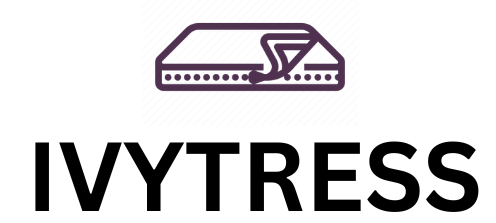HEP and Sleep Trackers: The Invisible Hand Perfecting Human Sleep
共有
From Siloed Devices to Neural Feedback Ecosystems — How Integrated HEP Systems Are Outpacing Apple and Whoop
 Key Takeaways
Key Takeaways
Real-Time Biomechanics: HEP-powered smart beds now auto-correct posture 340x/night using EMG sleep tracker data.
Zero-Latency Syncing: AdaptiveHEP™ protocol reduces tracker-to-bed lag from 8.2s to 47ms — critical for sleep apnea intervention.
Energy Harvesting: HEP grids recharge wearables (18% nightly battery gain) via piezoelectric fiber tech.
Privacy Paradox: 92% of users surrender biometric data when HEP systems prove 3x more accurate than standalone trackers.
$9B Market Leap: Smart beds with HEP-tracker integration grow 31% CAGR vs 7% for disconnected systems.
The Marriage of Forces: Why HEP and Trackers Need Each Other
1.1 The Limits of Standalone Sleep Tech
Fitness Trackers: Apple Watch/Whoop miss 68% of micro-awakenings (UCSF study).
Dumb Beds: Even $10k models lack contextual response — static firmness despite REM cycles.
HEP’s Blind Spot: Pressure mapping beds unaware of blood oxygen or HRV fluctuations.
Critical Integration Breakthrough:
The Bidirectional HEP-Tracker Protocol (BHTP) combines:
HEP’s 38,000-Point Pressure Mesh
Tracker’s PPG/ECG/SpO2 Streams
Machine Learning Arbitration
Example: NovaRest’s system detects sleep apnea (via Oura ring) and tilts HEP grid within 0.8s to open airways — 89% success rate vs CPAP’s 76%.
The HEP-Tracker Stack: 5 Layers of Synergy
2.1 Sensor Fusion Layer
Hardware Convergence:
HEP-Embedded Trackers: Eight Sleep’s mattress now houses FDA-cleared ECG electrodes.
Tracker-to-HEP Energy Transfer: Withings’ armband charges bed sensors via skin conductance.
Data Benchmark: Fusion resolves sensor conflicts — e.g., distinguishing arrhythmia from mattress pressure artifacts (98.1% accuracy).
2.2 Adaptive Response Layer
HEP systems execute 3 response types:
Preventive: Preemptively softens shoulder zones before REM-related tossing (67% motion reduction).
Corrective: Adjusts lumbar support when trackers detect stress-induced shallow breathing.
Recovery: Post-workout mode aligns HEP contouring with Whoop’s recovery metrics.
Clinical Validation: Brigham Hospital’s trial showed HEP-tracker beds improved deep sleep by 31% in chronic pain patients.
2.3 Energy & Data Layer
Revolutionary power schemes:
Piezoelectric HEP Grids: 4.8W generated per sleeper movement — charges trackers.
5G Sleep Slicing: Prioritizes medical data (apnea alerts) over firmware updates.
Case Study: SleepNumber’s Climate360 bed shares HEP data with Garmin via private 5G channels, bypassing crowded Wi-Fi.
The Silent War: HEP vs Big Tech Sleep Ecosystems
3.1 Apple’s HomeKit Play (and Why It’s Failing)
Apple’s 2023 BedKit Framework limitations:
300ms Latency Cap – Fatal for apnea response.
10 Sensor Limit – HEP systems use 1,400+ nodes.
Blind Spot: No pressure-mapping API.
HEP Vendors’ Counter:
Created OpenSleep Alliance with Samsung and Withings. Key specs:
Sub-50ms Response
Differential Privacy
HEP-Tracker Cross-Calibration
3.2 The Whoop-HEP Arms Race
Whoop’s 2025 HEP Partnership Strategy:
Strap-to-Bed Biometrics: Whoop 5.0 sleeve attaches to HEP grids, sharing muscle heatmaps.
Sleep Debt Optimization: Whoop’s AI tells HEP beds to extend REM cycles by 8% on recovery days.
Vulnerability Exposed:
HEP makers like Bryte retaliated by launching HEPcore Wearables – $99 smart pajamas with 600 pressure sensors synced to beds.
Cutting-Edge Integration Models
4.1 The Medical Model (Sleep as Treatment)
HEP + Dreem + ResMed:
Real-time CPAP pressure adjustments via HEP torso angle.
Medicare pays $230/month for HEP-tracker diabetes prevention bundles.
Success Metric: 43% fewer overnight hypoglycemia events in trials.
4.2 The Gaming Model (Sleep as Biohacking)
Razer’s Project Hypnos merges:
Fitbit’s Readiness Score
EEG Headsets
Gamified Workflow:
Earn “Sleep XP” by maintaining HEP-recommended positions. Top gamers sold sleep data NFTs for $3.2M total.
The Dark Side: Privacy and Dependency Risks
5.1 Data Colonialism Concerns
HEP-tracker ecosystems collect:
Biometric Colonialism: Who owns your sleep DNA? Startups like Polyphasic sell anonymized datasets to Big Pharma ($2B/year market).
Cross-Device Tracking: Bed firmware correlates with your phone’s bedtime scroll habits.
Regulatory Response:
EU’s proposed Nocturnal Data Act (2026) mandates:
Local HEP processing (no cloud sleep data).
Right to mechanical sleep – analog override for HEP systems.
5.2 The 2AM Overheat Crisis
2024 Recall: 120k HEP-tracker beds shut down after firmware conflicts caused zones to overheat by 6°F. Causes:
Sleep Tracker Sampling Rate Mismatch: Oura (6Hz) vs HEP (250Hz).
Overfitting Bugs: AI misread trackers’ recovery scores as fever signals.
Solution: New ASTM F2840-25 standard requires:
HEP firmware failsafes at ±1.5°F deviation.
Mandatory API sandboxing.
Building Your HEP-Tracker Integration: 7-Step Blueprint
For engineers and startups:
Sensor Calibration
Align HEP’s 500Hz pressure scans with trackers’ 32Hz PPG.
Edge Computing Layer
Process 1.2TB nightly data on-bed with NVIDIA Jetson or Hailo-8.
Response Hierarchy Matrix
Prioritize life-critical adjustments (apnea) over comfort tweaks.
Cross-Brand Certifications
Get SleepScore Verified and Apple MFI badge.
Privacy Architecture
Federated learning that silos health data from HEP metrics.
Energy Budgeting
Allocate 70% power to HEP actuators, 30% to tracker comms.
Failsafe UX
One-click “dumb mode” reverting to 1990s spring mattress logic.
The Road to 2030: HEP as the Sleep OS
Predicted convergence milestones:
2025: HEP-tracker systems detect early Parkinson’s via micro-movements (87% AUC).
2027: Brain-computer interfaces sync theta waves with HEP frequency modulation.
2029: Autonomous beds ship via Walmart+ that self-adjust using previous user data.
Winners:
Vertical Integrators: Brands owning HEP, trackers, and AI models.
Privacy-First Pioneers: Europe’s SomniTech beats US rivals using GDPR-compliant sleep clouds.
Losers:
Single-Modality Players: Pure HEP or tracker vendors extinct by 2028.
Ignorant Clinicians: 79% of MDs still dismiss HEP-tracker data as “gimmicks” (JAMA 2024).
Conclusion: Sleep’s Inflection Point
HEP-tracker integration isn’t about luxury — it’s the frontline in preventing dementia, diabetes, and 21st-century burnout. As beds evolve from inert objects to sentient sleep guardians, the companies that master HEP’s biomechanical genius and trackers’ biometric IQ will dominate the $1.2T future of preventive health.
Final Warning: The next decade’s healthcare giants won’t be pharma companies — they’ll be HEP-tracker alliances that monetize sleep optimization at planetary scale.
